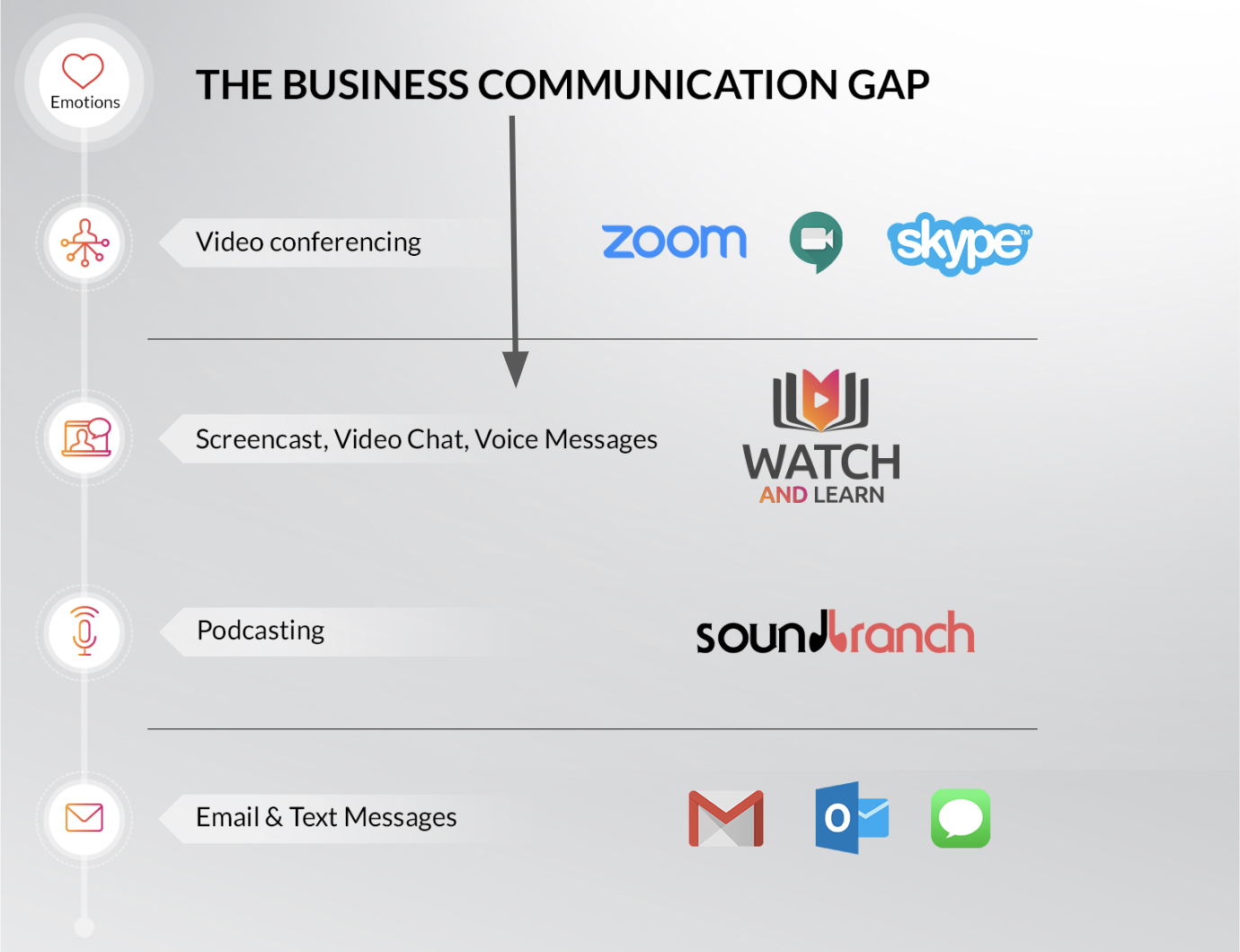
As many companies are encouraging staff to work remotely due to social distancing, this is the first time that many people will be discovering the pros and cons of working from home.
Let me explain the communication gap and a big opportunity. When it comes to remote communication, people are doing one of two things: either attending a live meeting, or phone call. Otherwise, people are sending emails.
Both of these communications types have advantages but can present a lot of friction.
Firstly, you have to schedule a meeting which can lead to unnecessary stress, through conflicting schedules and even time zones. Secondly, emails lack emotion and quite often a message can be misunderstood.
One of the other challenges of working remotely is loneliness. People like to attend an office for the social interaction they get with co-workers. This social interaction is significantly reduced when you can’t have the water cooler conversations and chance meetings where some of the best ideas surface.
The big opportunity is the whitespace between meetings and emails. In order to grasp this opportunity people need to change their habits. We have to stop scheduling unnecessary meetings and sending inappropriate email.
Instead we need to use our voice and body language. The best type of communication is face-to-face and when this is not possible doing this asynchronously is the best solution. Imagine your new inbox – instead of reading countless emails, you’ll be watching videos and listening to voice notes. This is a delightful experience as most of us are glued to our inboxes during the day.
We have been running this type of communication internally at Webanywhere for the last two years.
Here are some of the insights and learnings from this experience:
- You can see quite quickly who’s engaged by how much posting and listening occurs
- You can spot future leaders who spark conversations
- You can predict who might leave the organisation with their lack of activity
Overall, you get to hear more people more often which leads to greater inclusion in your business. This inclusion, in turn, leads to better engagement as people see managers listening. Long before computers existed we used to talk to one another and the keyboard seems to have got in the way. Let’s get people talking again with video chat. After all, we remember 95% of what we watch vs 10% when reading text. Finally, it’s a lot quicker to talk than type, and we are no longer sitting in open offices where this used to be the only place to do that. The business communication gap exists, when are you going to fill it?